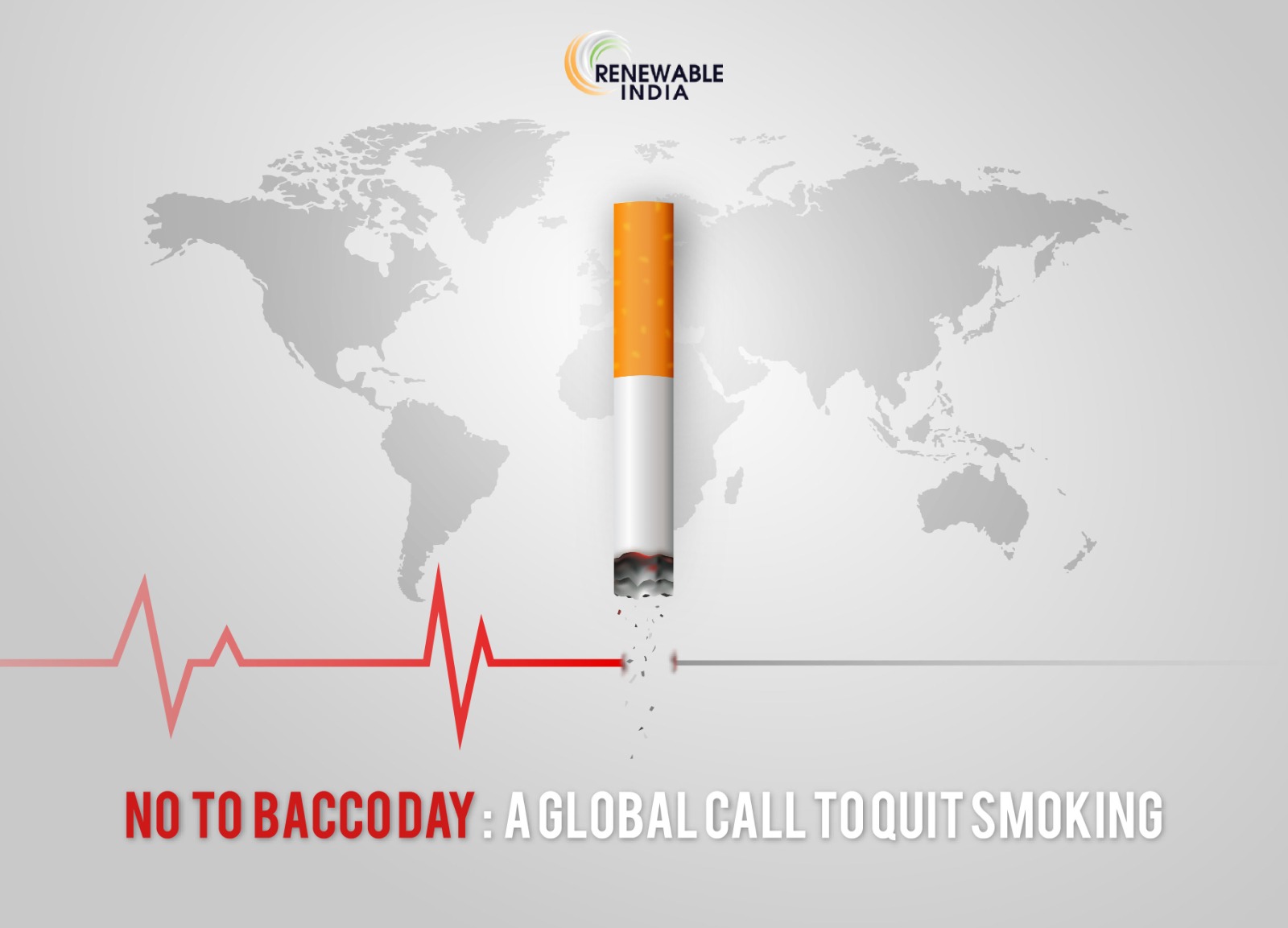Addictions are deadly, be it food, substance or tobacco. Unfortunately, we know the fact but still find it hard to break toxic habits and find new good ones. However, if this tobacco day reminds ourselves of the potential harms of tobacco, then we can definitely motivate ourselves to quit this habit and inhibit its usage in our young generation as well. However, first let us highlight some facts regarding the day.
History & Objective of “No Tobacco Day”
No Tobacco Day was first observed in 1987 as a way for the World Health Organisation (WHO) to establish tobacco control measures and improve public awareness of the harmful effects of smoking on one’s health. This day, WHO encourages tobacco consumers to try and quit smoking and chewing the harmful substance for at least 24 hours. The celebration of the day takes place annually on 31st May.
No Tobacco Day is an opportunity to raise awareness of the dangers of tobacco smoking, such as numerous cancers, cardiovascular and respiratory conditions, and other health issues. The day also emphasises how critical it is to advance tobacco control policies in order to safeguard the public’s health.
Not to forget, the day has a particular topic or focus every year that addresses a different component of tobacco control. These themes focus on a range of subjects, including tobacco marketing and advertising, secondhand smoke, the effects of tobacco use on particular population groups, and the significance of tobacco taxation and regulation.
The observance of the respective day is essential for increasing awareness, encouraging smoke-free living, and fighting for laws that restrict tobacco use, all of which improve public health results on a global scale.
Harmful effects of Tobacco consumption
- Increased risk of several cancers- Smoking is a leading cause of cancer, including bladder, kidney, esophageal, lung, mouth, and throat cancers. The main factor in cancer-related deaths that could have been prevented is smoking.
- Diseases of the respiratory system brought on by tobacco use include emphysema, chronic bronchitis, and chronic obstructive pulmonary disease (COPD). It makes asthma symptoms worse as well.
- Heart disease, stroke, and other cardiovascular problems are all significantly increased by smoking. Smoking causes blood vessels to deteriorate, raises blood pressure, and encourages the growth of arterial plaque.
- Smoking decreases lung function, which can result in diminished lung capacity, breathlessness, and a lower capability for physical activity.
- Gum disease, tooth loss, oral cancer, and other oral health problems are all made worse by smoking. Additionally, it may result in tooth discolouration and foul breath.
- Negative effects on reproductive health – Smoking can raise the risk of sudden infant death syndrome (SIDS), erectile dysfunction in men, pregnancy difficulties, early birth, low birth weight in new-borns, and infertility.
- Effects of Passive smoking – Non-smokers who are exposed to second-hand smoke may experience respiratory disorders, heart disease, lung cancer, and other health concerns.
- Symptoms of addiction and withdrawal – Dependence develops due to nicotine, a highly addictive chemical found in cigarettes. When someone stops using tobacco, they frequently experience withdrawal symptoms like irritation, anxiety, depression, trouble concentrating, and strong cravings.
- Early ageing symptoms – Smoking hastens the ageing process, resulting in wrinkles, early skin sagging, and a lifeless complexion. Additionally, it raises the possibility of getting skin cancer.
- Financial burden- Due to medical costs and missed productivity, tobacco use not only has a negative impact on one’s health but also has a major financial impact on people, families, and healthcare systems.
How we can contribute in promoting the “No Tobacco Day”
- Conduct educational sessions, seminars, or workshops to inform individuals about the risks associated with tobacco use and its effects on health. Organise awareness campaigns.
- Make success stories known- Tell uplifting tales of people who have successfully quit smoking and how it has improved their lives.
- Establish a social media campaign- Use social media sites like Facebook, Twitter, and Instagram to spread the word about the dangers of smoking and entice people to join the campaign.
- Provide assistance programmes- Work together with neighbourhood healthcare facilities, non-profit organisations, or support groups to offer counselling, nicotine replacement therapies, or other services to assist people in quitting smoking.
- Activate youth – By hosting interactive sessions, tournaments, or poster competitions, try to reach out to schools and colleges to inform students about the risks associated with tobacco use.
- Organise community gatherings – Plan events like marathons, protests, or group workouts to encourage healthy living and reduce cigarette use.
- In support of policies – Work with decision-makers to promote tighter tobacco control laws, such as higher fines, complete restrictions on cigarette advertising, and smoke-free public areas.
- Engage medical professionals – Encourage healthcare professionals like nurses and doctors to encourage and offer advice to their patients who want to quit smoking.
- Offer rewards – Create incentives or awards for those who successfully give up smoking to motivate them to maintain their commitment to a tobacco-free lifestyle.
- Distribute resources – Distribute leaflets, booklets, or online tools that are educational and offer resources for quitting smoking, including helplines, advice, and methods.
Conclusion
No Tobacco Day is a poignant reminder of the essential need to liberate oneself from tobacco’s hold and adopt a healthier, smoke-free lifestyle. The negative effects of smoking are evident, ranging from fatal diseases to early ageing and financial obligations. We can create a smoke-free world by increasing awareness, encouraging cessation, and fighting for strong tobacco control laws.
Let’s join in our opposition to tobacco, encouraging one another to give up smoking and living smoke-free. We can improve the atmosphere, make it easier to breathe, and build a better future for both present and future generations. Let’s spark the flame of change on this No Tobacco Day by changing lives and creating a healthier, tobacco-free planet one breath at a time.
Leafy Organic Straws – A Sustainable Revolution for a Greener World

Leave a Reply